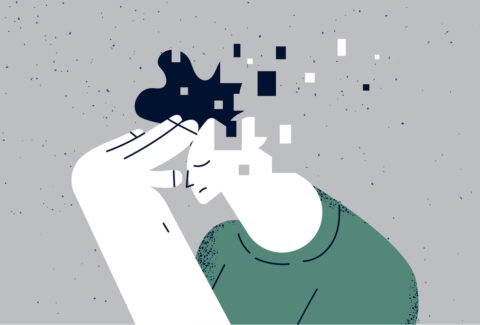Principles of Imagination-Focused Therapy (IFT)

Principles of Imagination-Focused Therapy (IFT)
In a previous article, entitled, The Practical Use of Imagination-Focused Therapy (IFT), we talked about a number of relevant factors and triggers that aid in the practical use of our cognitive function of imagination. This article introduces the principles to follow so everyone has a guide around the practice, implementation, facilitation, and transfer of the practical use of our cognitive function of imagination.
For the practical use of the faculty of imagination, the following 7 principles apply:
1. The Neutrality Principle:
There are no such things as good or bad ideas, good or bad thoughts, or good or bad words. When it comes to our cognitive function of imagination, everything is information, everything is evolution, everything is an invitation, and everything is an opportunity.
2. The Best Interest Principle:
All ideas are neutral, are designed to create something, and ultimately are intended for the best possible outcome. As we embark on the use of our cognitive function of imagination, we are in a process – a process we are to trust, knowing that the outcome is always for the best, even when we are yet to see it that way.
3. The Noise Principle:
An idea may seem to be promoting or interfering. We experience this through the thinking and feeling of our thought. What seems to be promoting or interfering is simply Noise, and nothing else. What we are to do, then, is not to react; rather recognize it as an intrinsic part of the process and learn to be with it. Ultimately, we will see that such noise is, indeed, designed to create (or tell us) something[1].
4. The Nurturing Principle:
We are always making use of our cognitive function of imagination. We cannot not make use of it. However, we are doing so unconsciously, most of the time, if not almost all the time. This means we do not really know how we are using it, how we are relating to it, how much we may be using it against us, or what to do, or even when (or where) to start. This is why, as explained in the previous articles, the first step is making the use of our cognitive function of imagination a conscious one. Once we start consciously making use of our imagination[2], we increase our awareness[3] and then start nurturing it.
Nurturing our cognitive function of imagination entails:
- Noticing it
- Observing it
- Following it
- Engaging it
- Probing it
- Experiment with it
- Replicate
These 7 steps of the Nurturing Principle for the practical use of our cognitive function of imagination is rather crucial.
5. The Relationship Principle:
This principle is crucial. Our relationship with our cognitive function of imagination parallels our relationship with our other cognitive functions. This is because our brain works both separately and as a whole. Such a paradox is a function of how Life itself works, or how Nature itself operates.
What does a healthy relationship with our cognitive function of imagination entail?
- Awareness of its inner workings and of how we make use of our cognitive function of imagination[4]
- Awareness of how we relate to it
- Pattern recognition[5]
- Pattern reinforcement recognition
- Pattern eradication
6. The Intention-Action Principle:
This, too, is a very crucial principle. Each time we imagine, whether consciously or unconsciously, we are intending. Intending is an intrinsic part of the process of the practical use of our cognitive function of imagination[6], and so is acting. Acting has two parts: One is conceptual, while the other one is concrete. Conceptual acting is often taking place, while concrete acting operates based on timing. The term “timing,” means “a particular point or period,” and this is a crucial part of the Intention-Action Principle because concrete acting outside of timing is one of the factors that explain why a lot of individuals fail to reap the benefits of their cognitive function of imagination.
7. Process-Outcome Principle:
There is scientific evidence to support the fact that solely imagining an outcome we want may be rewarding enough to stop an individual from being motivated towards concrete acting[7]. While concrete acting is ruled by timing, failing to act with timing is due to a misunderstanding or ignorance of the Process-Outcome Principle and often stifles the flow of the practical use of the cognitive function of imagination and its process.
An optimal way to make us of our cognitive function of imagination is to imagine the effort to the outcome, in addition to imagining the outcome. In other words, we marry conceptual acting with concrete acting, the latter, with timing.
Would you like to learn about each of these 7 principles of Imagination-Focused Therapy (IFT) in greater depth?
If so, join us for our 4-week certificate course. Click HERE to enroll.
[1] Kahneman Daniel et al. Noise a Flaw in Human Judgement. William Collins 2021.
[2] Thomas, Nigel JT. “Are theories of imagery theories of imagination? An active perception approach to conscious mental content.” Cognitive science 23.2 (1999): 207-245.
[3] Carlson, Stephanie M. “Development of conscious control and imagination.” Free will and consciousness: How might they work (2010): 135-152.
[4] Gordon, Kate. “Perception and imagination.” Psychological Review 42.2 (1935): 166.
[5] Loasby, Brian J. “Cognition, imagination and institutions in demand creation.” Escaping Satiation. Springer, Berlin, Heidelberg, 2001. 13-27.
[6] Anderson, Craig A. “Imagination and expectation: The effect of imagining behavioral scripts on personal influences.” Journal of personality and social psychology 45.2 (1983): 293.
[7] Sinhababu, Neil. “The Humean theory of motivation reformulated and defended.” Philosophical Review 118.4 (2009): 465-500.






